Let’s rewind for a moment. Montblanc officially entered the watch industry 21 years ago. According to WatchTime lore, way back in 1997, after the first line of Montblanc watches was released (inspired by the iconic Meisterstück pen line), the Montblanc CEO at the the time, Norbert Platt, endured a press conference where journalists riffed on the watch with questions like, “Where do you fill it with ink?” To circumvent such sarcasm from the normally-quite-genial (I promise) watch and fashion press, Montblanc continued slowly expanding its watchmaking capabilities until purchasing the aforementioned Minerva marque that had fallen into disrepair in 2006.
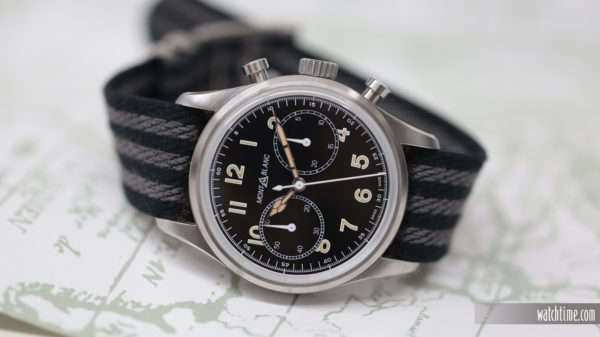
In the past 12 years, we’ve seen Montblanc’s profile rise in the industry as well as in the caliber of timepieces it produces. And, along the way, the brand has adapted the Minerva heritage in more ways than one. Not only does the Minerva manufacture in Villeret, Switzerland, produce all of the brand’s high-end pieces (it’s best known for hand-wound, column-wheel chronographs), but Montblanc has made the history of Minerva design a forward-facing aspect of the watches it releases. This was more apparent than ever at SIHH this year with the expansive 1858 collection that included timepieces that range from simple time-only watches to a fresh take on a GMT, limited-edition versions of classic monopusher chronographs, a few pocketwatches, and the watch I wore for about two weeks over the summer, the 1858 Automatic Chronograph, an entry-level option compared to its more horologically potent, and more expensive, chronograph siblings.
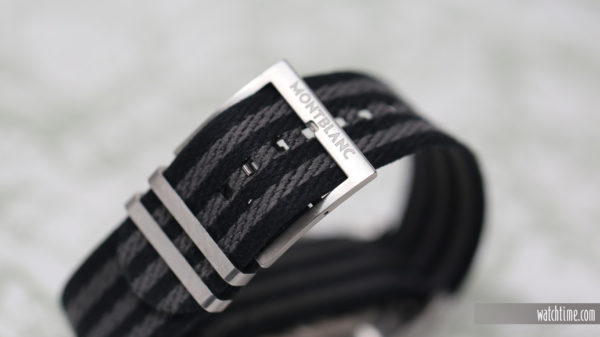
Ever since the 1858 collection was reintroduced at SIHH 2015, it has served as the platform for Minerva-esque design. Where previous and current members of the 1858 family had a fully-fleshed identity from inside-out, the 1858 Automatic Chronograph utilizes a base Sellita caliber (SW500, to be exact) to reach a new customer base in the sub-$5,000 chronograph category. (There’s also a bronze version that comes in right at $5,000.)
And, putting it bluntly, the 1858 Automatic Chronograph is a very successful piece. Of course, it’s not breaking down any horological barriers, but looking at it through the lens of Montblanc, a bi-compax chronograph with old-school pump pushers is a no-brainer addition to its lineup of heritage-driven designs.
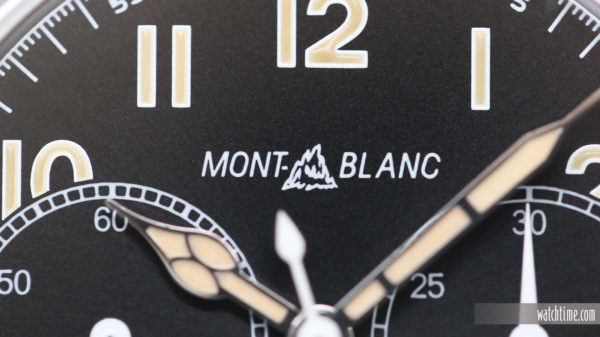
As mentioned, there are two case material and dial options available. The stainless-steel model comes with a black dial and either a striped NATO or a brown leather strap, and the bronze version comes with a champagne-tinted dial and an identical leather strap. Although the leather strap is hand stitched at the Montblanc Pelletteria in Florence and is a fantastic example of how a company can leverage its multiple product offerings together, the watch in our test had a NATO strap given the time of year and environ (beach) where I wore it. It’s worth noting that the NATO isn’t any run-of-the-mill strap either, it’s handcrafted at a 150-year-old weaving manufacture in France and feels both robust and comfortable on the wrist. The alternating black-and-gray stripes also give it a subdued-enough look so it could easily pass in a casual office setting. Wearing it with a blazer might be pushing your luck, but that would be the case with any vintage-styled chronograph.
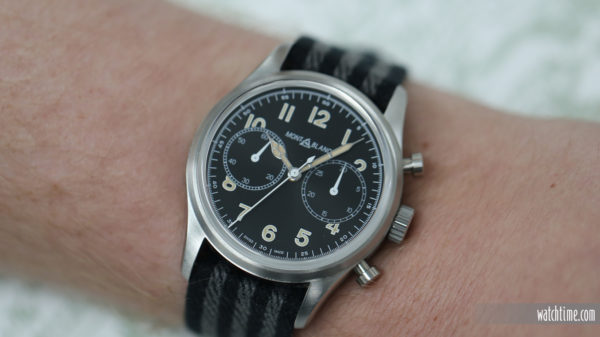
At 42 mm, the 1858 model lands in the sweet spot for contemporary chronographs and provides the dial ample room for enhanced legibility. There’s an outer minutes ring in white that contrasts with the black background and two prominent registers at the 9 and 3 o’clock positions for running seconds and a 30-minute counter, respectively. The hour and minutes hands are period-appropriate cathedral style while the chronograph seconds counter uses a pointer with a small counterweight on its opposite end. On the caseback, there’s a handsome engraving featuring the Mont Blanc mountain in relief and a vintage Montblanc compass-with-pickaxe logo. The thick pilots’ crown effectively complements the pump pushers and is easy to grasp.
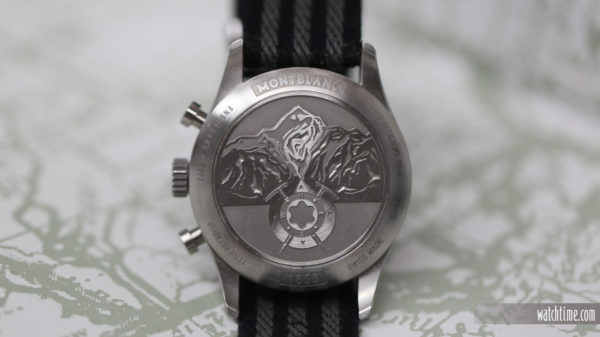
Montblanc has said that it draws its primary inspiration for the 1858 collection as a whole from a 1930s Minerva chronograph, but where the modern watch channels a common WWII-era chronograph design with pump pushers, a straightforward case and dial configuration, the vintage watch was itself a monopusher. While monopushers are captivating, they also tap into a very niche segment of the market, which is why we see the monopusher designs in 100-piece limited-edition sets. Other than the dual pushers, the main differences between the vintage and modern designs include the usage of bold Arabic numerals filled with faux-aged Super-LumiNova for all the hour markers rather than bar indexes segmented by numerals and the cathedral-style hands.
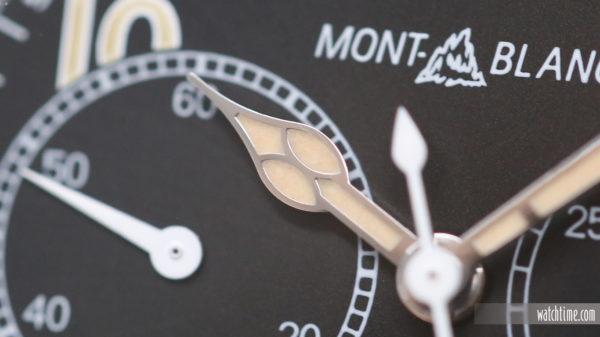
Despite those obvious differences, there are some vintage-inspired details that translate extremely well to the 2018 model. The railroad minutes track that runs along the outer ring of the dial and on the two oversize registers is an immediate crossover and one of the most identifiable and successful design notes on the watch. When compared to the bronze version, it’s apparent that the steel model has the highest level of vintage appeal and most closely matches the aesthetic of the original 1930s Minerva model.
The only complaint I have is relegated to the width of the watch, undoubtedly caused by the chunky SW500 movement with a 48-hour power reserve, which is near-identical to the prevalent ETA Valjoux 7750 and features the same recognizable whirring rotor. As with all of Montblanc’s watches, the movement must successfully pass the Montblanc Laboratory Test 500, where each watch must run for 500 continuous hours to certify its accuracy and earn its brand-given moniker, which in this model is the MB 25.11 caliber.
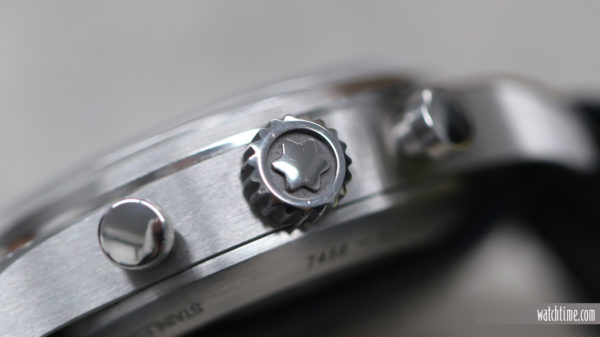
The Montblanc 1858 Chronograph represents a great entry-level acquisition for the discerning collector. Details such as the lack of a date window and Minerva-influenced design make it clear that the timepiece is targeted to the enthusiast market rather than a more general audience. It’s important to remember that Montblanc, one of the world’s most prominent and diverse luxury good companies, doesn’t necessarily need to make watches that appeal to the enthusiast audience. Its reach is large enough that it could crank out overpriced, time-only watches to the jet set. Instead, its approach honors horological history and introduces multi-tiered pricing levels so it can reach all levels of collectors. For those that have remained wary of Montblanc timepieces, the greater 1858 collection is a fantastic introduction to what the brand is trying to accomplish and there’s no better example within the line than the straight-forward and well-executed 1858 Automatic Chronograph.
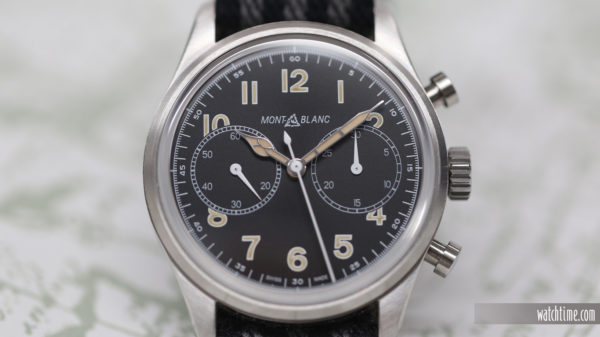
The Montblanc 1858 Automatic Chronograph is priced at $4,300 in stainless steel and $5,000 in bronze.

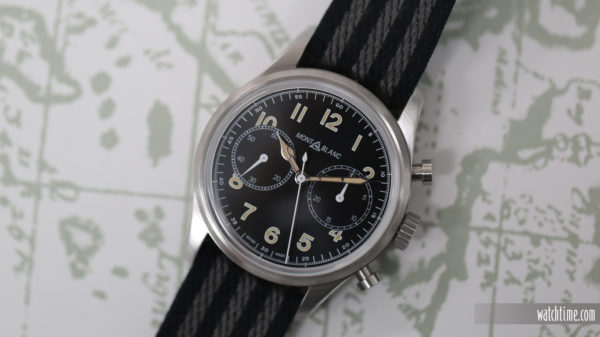
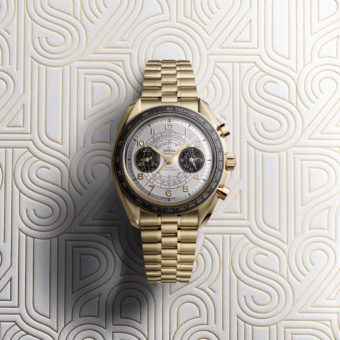
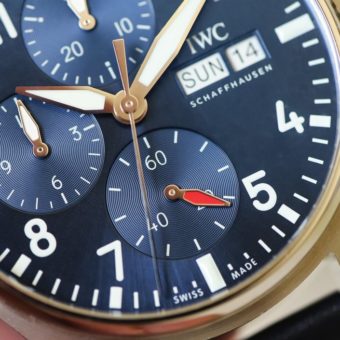
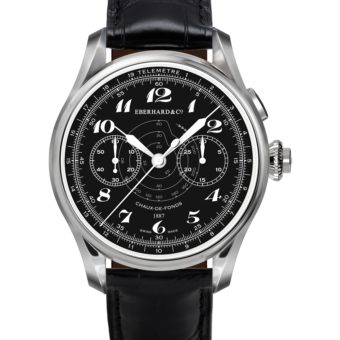
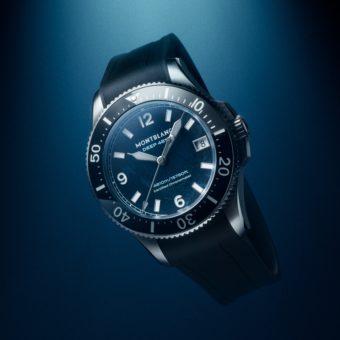
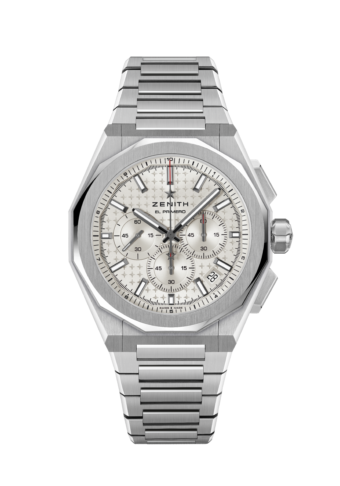
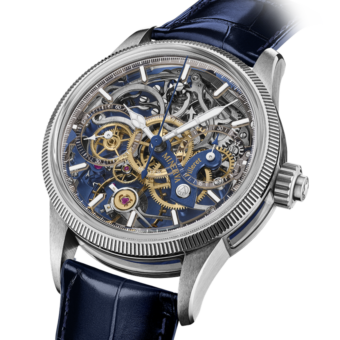
Oh, what could have been, but for the arrogance of two. I can remember like yesterday meeting Norbert Platt and Wolf Heindrichsdorf in Honolulu and dining at Alan Wongs on a beautiful October night, when Norbert leaned across the table and said, “Randy, ve vill always bleed ink at Mont Blanc”; my take that night, this may have been a Brand a Extension of someone else at Richemont. Having come on board in May as the National Director Sales and Marketing after being part of the re-launch of TAG-Heuer and overseeing their West Coast distribution for 9 years. That said, pre-S.I.H.H. We had a meeting in N.J. And I submitted the 1997-1998 Montblanc Business Review and Watch Launch’, the nucleus of which was what we had as compared to what we needed. Suffice to say, Alf Cremers Watch Time Article, with Norbert Platt of 2/99 has my suggestions implemented, 10 months later, after I had left. Too many changes, if Minerva, then Minerva, otherwise, it’s a Montblanc decide what it is, why it is, how it is, it’s not that complicated once one gets passed the arrogance.
For value in hardware you are better off buying a Hamilton. It looks similar or even better. Has a real 7750, not a Selita. AND can be had for ~$1000. Of course its a success its a $1000 watch being sold for 5x. Is the name worth it?
Panerai, IWC or perhaps Breitling? All have ETA-based models. I think i sell my watches and buy Hamiltons. As they have better “hardware” value………….
There are many people interested in watches who for some reason cannot see beyond the movement. There’s far more to a watch than simply the movement. Having handled this watch, the overall quality is far beyond Hamilton. Also, there’s absolutely nothing inferior about the Sellita vs a “real” Valjoux 7750. It’s essentially the exact same movement and has proven to be pretty bombproof and easily serviceable. And as has been said, if it’s good enough for Panerai, IWC, Breitling etc. then it’s a fine option here. My own preference would be a manual wind chrono (a modified SW500 would be fine) in keeping with Minerva’s tradition and the resulting slimmer case but you can’t have everything.
This is one beautiful watch. Love the vintage look.
I am extremely interested in, and would greatly appreciate receiving a hard copy of your full selection Mont Blanc catalog of gentlemans time pieces. I am particularly interested in your watches with multiple complications if you should also have individual publications detailing those timepieces.
Thank you.